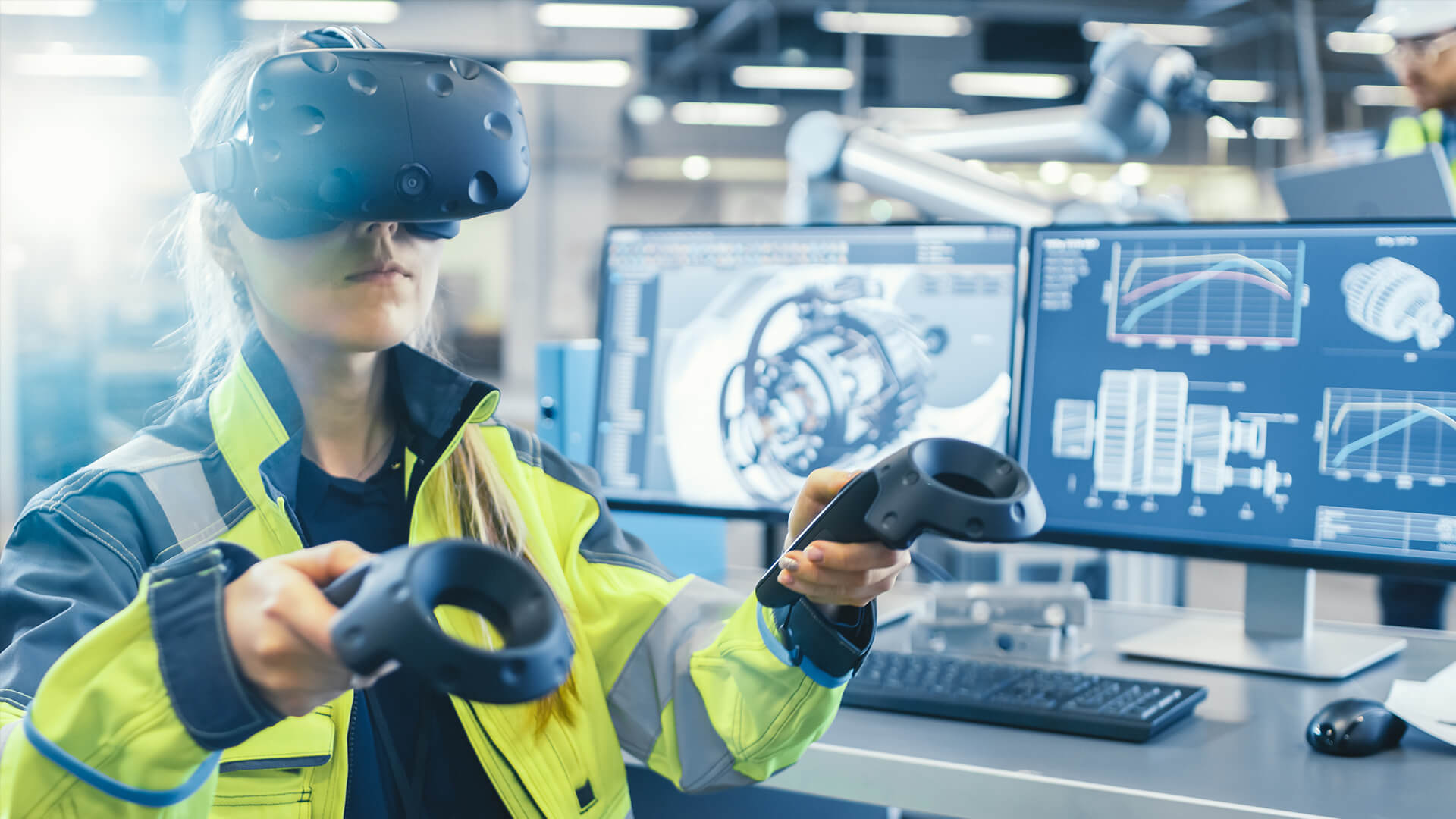Virtual reality training poses an alternative and engaging method to develop new skills. But, if you are considering incorporating immersive technologies into your company’s training course, how can you verify that it provides a realistic, long-term answer to your skills requirements? There are many positives and advantages that point to a great benefit in immersive training as VR technology advances. Employees acquire skills faster, retain information better, and increase productivity and safety by allowing them to participate in hands-on, practical training in a safe virtual environment. Furthermore, there are financial advantages.
5 Benefits of using VR for training
Improved Learning and Performance
People learn from job-related experiences 70% of the time, compared to 20% from interactions with others and 10% through formal learning, according to the 70/20/10 learning and development principle.
Learning new abilities, retaining information, and altering behaviours is thus far more efficient and effective when learning through physical contribution. Virtual reality’s strength shown through in its ability to provide a realistic environment in which learners can gain hands-on experience with certain work-related skills. It also allows them to make mistakes, receive immediate feedback via performance-related metrics, and easily repeat activities multiple times to swiftly improve skill.
Do the Impossible
In several industries, such as oil and gas, aviation, manufacturing, and healthcare, on-the-job training is just not an option. Practical training is far too dangerous or operationally unfeasible due to hostile working situations, nonstop manufacturing lines, and learning life-threatening techniques. In many of these circumstances, however, being thoroughly trained is job-critical, as failing could have disastrous consequences. In certain cases, virtual reality can be used to recreate dangerous events in a safe but realistic learning environment so that highly skilled and risky jobs can be practiced by failing, learning from their mistakes, and repeating tasks, students can improve their skills quickly and effectively. Learners can also work with more confidence, reducing costly mistakes and making workplaces safer.
Speeding up the learning process
Time is money in business. Employees who are trained quickly and efficiently contribute to greater company productivity, and fully immersive training experiences allow learners to learn new skills rapidly and retain them. Virtual reality also eliminates distractions, allowing learners to learn smarter and faster. According to a Microsoft study, humans have a shorter attention span than goldfish, losing concentration after eight seconds – which is not conducive to successful learning. We can block out real-world distractions by wearing a VR headset, making us more likely to fully concentrate on the work at hand.
Reducing costs
The long-term financial benefits of using VR training are compelling. Both direct and indirect savings compensate for the initial hardware expenditure. Once your course has been designed, the costs of scaling it is cheap because it eliminates the need for repeat courses and potentially high trainer fees. Furthermore, tangible indirect cost savings can be realized by reducing downtime and eliminating the need to stop production, as well as enhancing productivity by having better trained and proficient staff.
Remote Training and accessibility
The beauty of virtual training is that you can do it from almost anywhere in the real world. The need to get personnel together in the same physical area at the same time is meaningless with VR. This makes training more accessible to many employees because it may take place anywhere. VR training has had a substantial impact on travel and hotel costs, as well as the additional downtime that must be accounted in for employees travelling to attend their training, for companies based across multiple locations or even countries, in addition to those with a rising number of remote workers. Reduced travel also has a significant positive influence on a company’s environmental footprint.
Conclusion
Virtual reality provides innovative, engaging, and fun ways to train in a safe, yet realistic setting. Individual learners benefit from it, as well as teams training together, which streamlines the process and contributes to a safer and more productive workplace.




